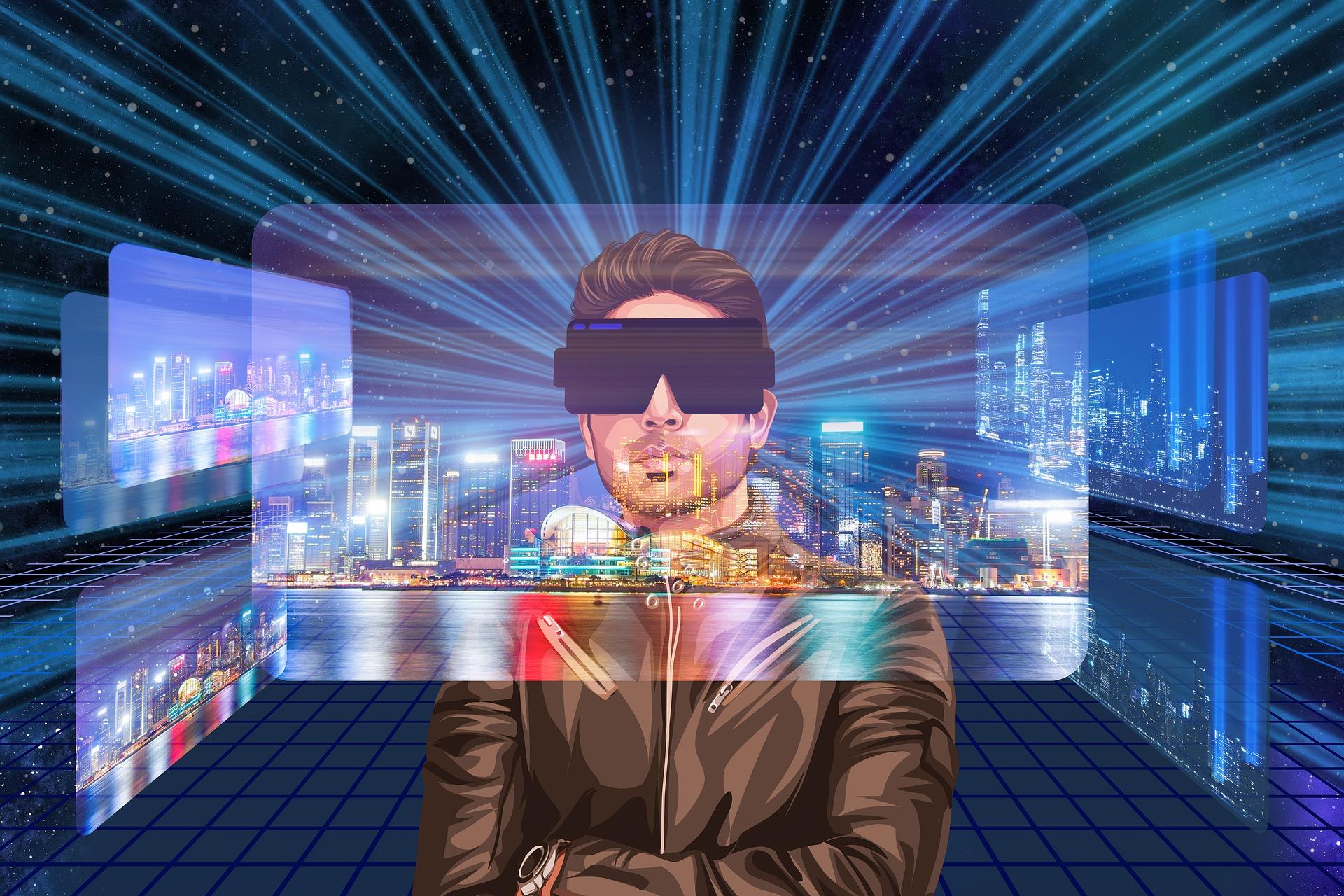Benefits Of Virtual Reality In Corporate
February 3, 2023What is virtual reality? What are some of the benefits of using virtual reality in corporate events
Virtual Reality In Corporate Events
Virtual Reality (VR) is a technology that creates a simulated, three-dimensional environment that users can interact with as if they were physically present. This is achieved by using a VR headset, which covers the user’s eyes and tracks their head movements, and a VR controller, which tracks the user’s hand movements. The combination of the headset and controller provides a sense of immersion, allowing the user to feel as though they are inside the virtual environment.
In VR, the user can look around and interact with the virtual world in a natural way, such as reaching out to grab an object or moving their head to look in a different direction. This level of immersion and interactivity makes VR a powerful tool for a variety of applications, including gaming, education, and training.
One of the key benefits of VR is that it allows users to experience and interact with virtual environments in a way that is not possible with traditional forms of media, such as video or audio. This opens up new possibilities for how we can learn, play, and experience the world around us.

In corporate training programs, VR has the potential to offer numerous benefits compared to traditional training methods. Here are some of the most notable benefits of using virtual business simulations in corporate training programs:
Improved engagement and motivation: VR provides a more engaging and interactive learning experience compared to traditional training methods, such as lectures or slide presentations. This can help to keep trainees motivated and focused on the material being presented, leading to better retention of information.
Enhanced visualization: VR allows trainees to visualize complex concepts and ideas in a more intuitive and immersive way. For example, they can visualize a business process or strategy in a virtual environment and then explore different scenarios or make decisions based on what they see. This helps to bring the material to life in a way that is more engaging and memorable.
Safe experimentation: VR simulations provide a safe environment for trainees to experiment with new ideas, strategies, and scenarios without the risk of failure. This allows trainees to develop their skills and understanding without the fear of making mistakes or causing harm to the business.
Improved collaboration: VR simulations can be designed to support collaboration, allowing multiple trainees to work together in a virtual environment. This can help to foster teamwork and communication skills, which are critical for success in a business setting.
Increased accessibility: VR technology is accessible to people with a wide range of physical abilities, making it an inclusive training tool. This means that people with disabilities or mobility limitations can participate in the training, which may not be possible with traditional training methods.
Better assessment and evaluation: VR simulations can be designed to provide real-time feedback and assessment, allowing trainers to gauge the progress of individual trainees. This can help to identify areas where additional support may be needed and provide a more accurate picture of the trainee’s understanding of the material.
Increased cost-effectiveness: Virtual business simulations can be created once and then used multiple times, reducing the cost of training compared to traditional methods. Additionally, VR simulations can be used to train employees remotely, which can reduce the cost of travel and accommodation.
In conclusion, virtual reality has the potential to transform corporate training programs, making them more engaging, effective, and cost-efficient. With VR technology becoming more accessible and affordable, it is likely that we will see an increased adoption of VR simulations in corporate training programs in the coming years.
Here are some examples of successful virtual reality applications in corporate training:
-
Walmart: Walmart has implemented VR simulations to train its employees in customer service, conflict resolution, and emergency response. The VR simulations provide a safe environment for employees to practice handling real-life scenarios, such as responding to a customer complaint or handling a shoplifter.
-
Ford: Ford has used VR simulations to train its assembly line workers in the construction of vehicles. The VR simulations allow workers to practice tasks in a virtual environment, reducing the need for physical prototypes and reducing the cost of training.
-
PwC: PwC, a professional services firm, has used VR simulations to train its employees in soft skills, such as public speaking and team collaboration. The VR simulations provide a safe environment for employees to practice these skills and receive real-time feedback, which can help them to develop their abilities in these areas.
-
Coca-Cola: Coca-Cola has used VR simulations to train its employees in safety procedures and emergency response. The VR simulations provide a realistic environment for employees to practice responding to real-life scenarios, such as a chemical spill or an earthquake.
-
Deloitte: Deloitte, a consulting firm, has used VR simulations to train its employees in business strategy and decision-making. The VR simulations provide a realistic environment for employees to practice making decisions and assessing the consequences of those decisions.
These are just a few examples of the many successful applications of virtual reality in corporate training. By providing a safe and engaging environment for employees to practice and develop their skills, VR has the potential to transform the way that businesses approach training and development.


